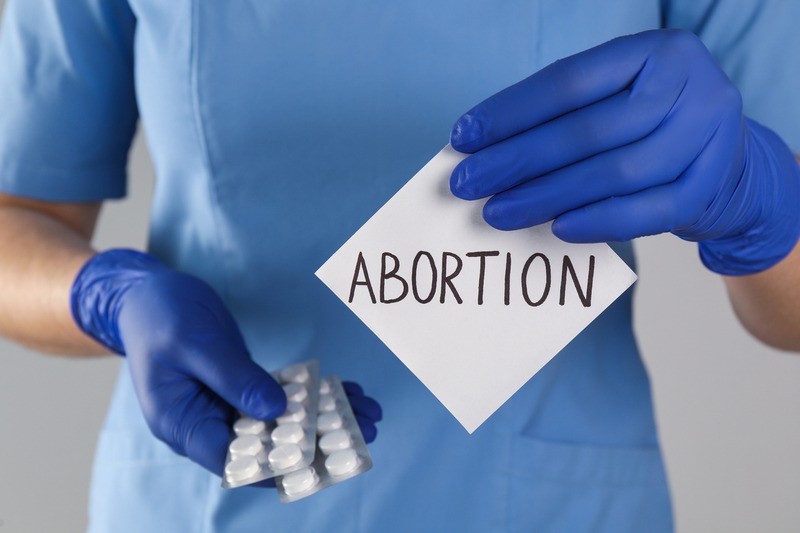Medical abortion, also known as the abortion pill, is a non-surgical procedure that uses medication to terminate an early pregnancy. It typically involves two drugs: mifepristone, which blocks the hormone progesterone necessary for pregnancy continuation, and misoprostol, which induces uterine contractions to expel the pregnancy. While the procedure is relatively straightforward, understanding what to expect during the recovery process can help you prepare physically and emotionally. This guide provides detailed information on recovery’s physical and emotional aspects, self-care tips, and signs that may require medical attention.
1. Physical Recovery
-
Bleeding and Cramping
You can expect to experience bleeding that is heavier than a normal menstrual period, which typically starts within a few hours of taking the second medication, misoprostol. This heavy bleeding can include clots and usually lasts for a few hours to several days. Light bleeding or spotting may continue for up to a month. It’s essential to monitor the amount of bleeding, and soaking through two or more pads per hour for consecutive hours is considered excessive and warrants medical attention, so do not hesitate to consult an Intense cramping, which can be more severe than menstrual cramps, begins within hours of taking misoprostol and is a sign that the uterus is expelling the pregnancy. Cramping may persist intermittently for several days, and using heating pads and over-the-counter pain relievers like ibuprofen can help alleviate discomfort.
-
Other Physical Symptoms
Nausea and vomiting are expected shortly after taking the medications but are typically short-lived. It is essential to stay hydrated and rest. Gastrointestinal upset, including diarrhea, may be a side effect and should subside within a day or two. Feeling tired or fatigued is expected due to the physical process and hormonal changes.
Ensure you get plenty of rest during this time. A follow-up appointment with your healthcare provider is usually scheduled one to two weeks after the procedure to confirm that the abortion is complete and to check for any complications. This may involve an ultrasound or a blood test.
2. Emotional Recovery
It is expected to experience a wide range of emotions after a medical abortion, including relief, sadness, guilt, or grief. Everyone’s experience is unique, and there is no right or wrong way to feel. These feelings can fluctuate over time, and it’s important to acknowledge and process them. Talking to trusted friends, family members, or partners about your feelings can provide comfort and support.
If you are comfortable, consider joining a support group where you can share your experience with others who have gone through similar situations. Professional counseling can be very beneficial if you find yourself struggling emotionally. A therapist can help you process your feelings and provide coping strategies. Many organizations offer counseling services specifically for individuals who have gone through abortions.
3. Self-Care Tips
Ensure you get plenty of sleep and avoid strenuous activities for at least a few days following the procedure at the abortion clinic in Atlanta. Over-the-counter pain relievers such as ibuprofen or acetaminophen can help manage pain and reduce inflammation. A heating pad on your lower abdomen can also relieve cramping. Staying hydrated is essential, so drink plenty of water and avoid caffeinated or alcoholic beverages. Eating a balanced diet rich in fruits, vegetables, and lean proteins can support your body’s healing process. Avoid heavy lifting and strenuous exercise for at least a few days to a week.
Gentle activities like walking can be beneficial, but listen to your body and rest when needed. Refrain from sexual intercourse until the bleeding has stopped to reduce the risk of infection, which is generally advised for at least two weeks after the procedure. Use pads instead of tampons or menstrual cups to avoid introducing bacteria into the vagina during the recovery period.
4. When to Seek Medical Attention
Contact your healthcare provider immediately if you experience any severe or persistent pain that is not relieved by over-the-counter medication or pain that is severe and persistent, as this may indicate a complication. Soaking through two or more pads per hour for consecutive hours is considered heavy bleeding and requires immediate medical attention.
A fever over 100.4°F (38°C) could indicate an infection and should be evaluated by a healthcare provider. Any foul-smelling vaginal discharge may be a sign of infection and should be checked by a healthcare provider. Any other unusual or concerning symptoms should be discussed with your healthcare provider.
5. Returning to Normal Activities
After a medical abortion, gradually returning to your normal activities is important for your overall well-being. Start with light activities such as short walks and gradually increase your activity level as you feel comfortable. Listen to your body and take breaks when needed. Avoiding strenuous physical activity for the first few days is crucial to allow your body to heal. For more comprehensive guidance on post-abortion care, visit this website: thewomenscenters.com/.
If you experience pain or discomfort while resuming normal activities, rest a bit longer and consult your healthcare provider if symptoms persist. Maintaining a balanced routine that includes rest, hydration, and proper nutrition will support your recovery process and help you regain your strength more effectively.
Wrapping Up
Recovering from a medical abortion is a highly personal experience that involves both physical and emotional healing. Understanding what to expect can help you better prepare and manage your recovery. It is essential to follow your healthcare provider’s instructions and to give yourself the time and care you need. Seek support when necessary, whether from loved ones, support groups, or mental health professionals. Remember, every person’s experience is different, and what you go through may vary from others. Be kind to yourself during this time, and reach out for help if you need it.





